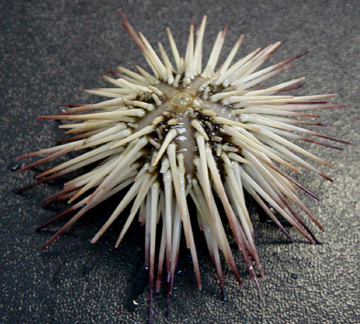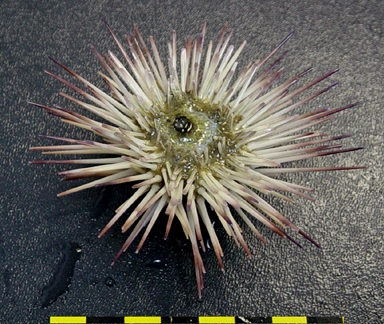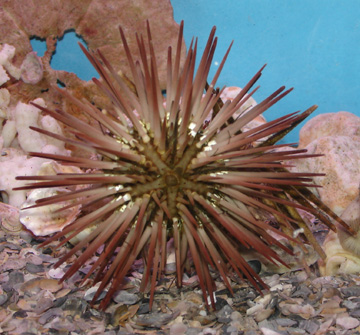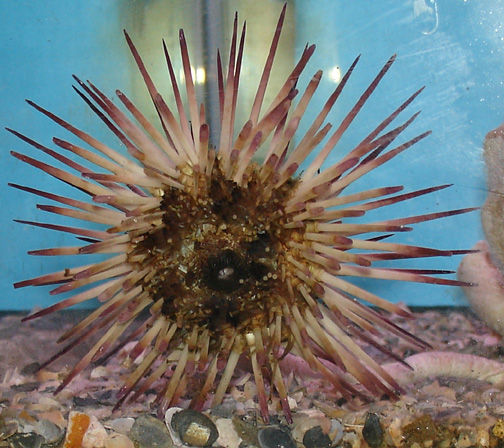

Dorsal (left) and ventral views. This species is noted for its long, etremely sharp, spines
that are light colored except for the purple and black tip. The test diameter is only ~4 cm,
but the spines of this species are 2.5 - 3.0 cm in length.
| Abundance: very common | Distribution:
inner shelf (10-20 m) and shelf-edge (100 m) |
Scroll down to review gallery images.


Dorsal (left) and ventral
views. This species is noted for its long, etremely sharp, spines
that are light colored except for the purple and black tip. The test diameter
is only ~4 cm,
but the spines of this species are 2.5 - 3.0 cm in length.


This specimen ( dorsal/aboral
view, left; side
view, right) was photographed in an aquarium.
The pentagonal (5-pointed) radial symmetry is easily seen. The spines are anchored
on the
ambulacral plates. They move continuously. Spines at the base aid with mobility.

This living
specimen was photographed on the side of an aquarium.
Note the "jacobs lantern" teeth, just visible at the centrally-located
mouth. Note the shorter spines nearer to the mouth. The tips of these
spines are not sharp and aid the organism with mobility across
the sediment surface.
To view
a video clip of this organism in an aquarium, click on the image below.
In the movie, the urchin is actually maneuvering on its side, avoiding the
nearby pencil urchin.
Two anemones are to the right. The urchin's spine is
jabbing at the mouth of one of the anemones.
